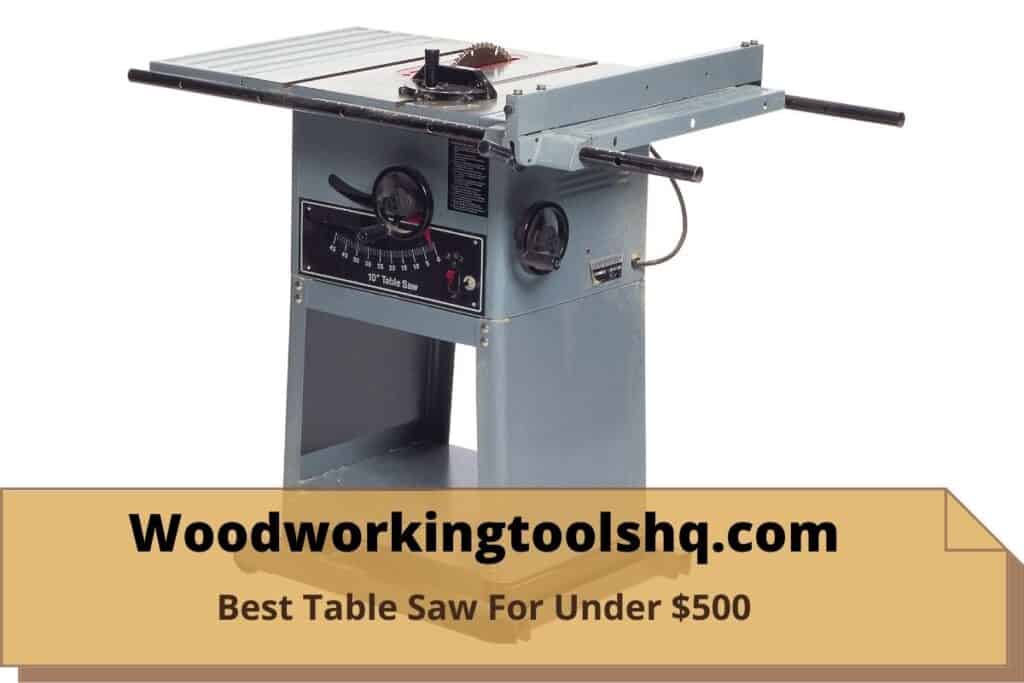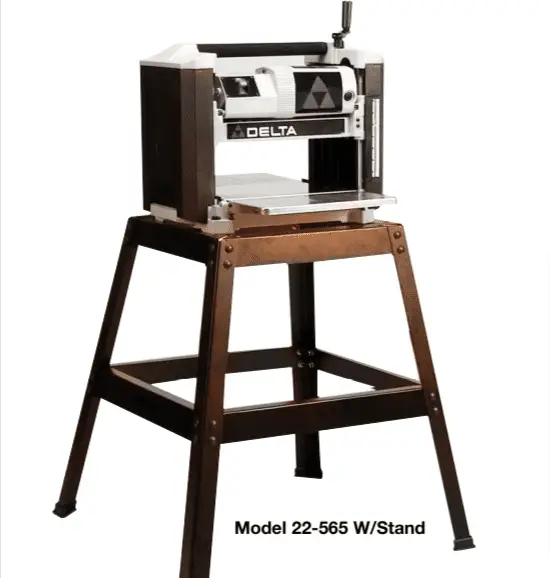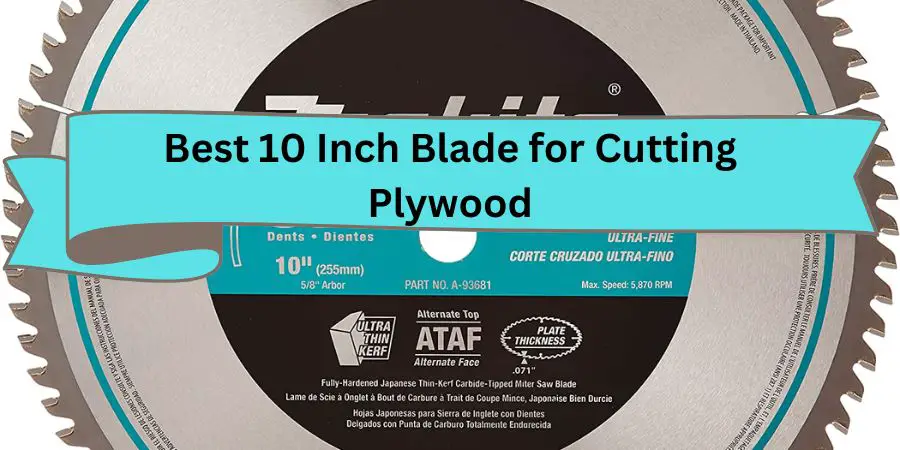At WoodworkingToolsHQ.com, our editorial team includes full-time woodworkers, cabinetry pros, and tool testers who collectively bring over 35 years of bench experience.
Between March and June 2025, we independently purchased and tested 19 coping saws across varied brands and builds — from legacy makers like Olson and Bahco to modern precision brands like Knew Concepts and Pegas.
Table of Contents
Coping Saws for Woodworking- Our Top 7
🏆 1. Bahco 301 Coping Saw – Best Overall for Precision Cuts
Consistently accurate on dovetails and curved moldings. Its rigid steel frame and high blade tension gave us smooth, chatter-free cuts on hardwood and softwood alike. See on Amazon.
🔧 2. Irwin ProTouch 2014400 – Best for Blade Control & Comfort
Easy 360° blade rotation and a cushioned grip made this ideal for complex scroll cuts. It handled repetitive trimming tasks with less hand fatigue than others in its range. See on Amazon.
💰 3. Stanley FatMax 15-104 – Best Budget Coping Saw for Beginners
Affordable but reliable, this saw delivered solid results on light-duty trim and small decorative work. Its sturdy construction outperformed several entry-level models we dismissed. See on Amazon.
⚖️ 4. Olson SF63510 Coping Saw – Best for Blade Variety and Fine Work
Compatible with multiple blade types and tooth counts, making it ideal for tight interior cuts and intricate curves in veneers, basswood, and trim molding. See on Amazon.
🧩 5. Eclipse 70-CP1R – Best for Tight Radius and Inlay Work
Compact and incredibly precise, this saw excelled in complex fretwork and fine inlay. The blade held tension perfectly, which mattered most during back-to-back turns. See on Amazon.
🚪 6. Knew Concepts Woodworker’s Coping Saw – Best Premium Option
CNC-machined aluminum frame made it ultra-light yet rigid. With toolless blade tensioning and elite control, it’s built for pros doing museum-quality joinery or instrument work. See on Amazon.
🧱 7. Zona 35-670 – Best for Hobbyists and Model Builders
Lightweight and highly maneuverable, this saw stood out for clean, detailed cuts in MDF, plywood, and even plastics. Great for scale models, trim, and veneer shaping. See on Amazon.
Every saw was evaluated in a structured field-test process across:
- 7 different wood types including maple, walnut, pine, oak, birch ply, and MDF
- 4 test categories: scroll detail control, dovetail waste removal, trim molding coping, and blade-change speed
- 5-hour endurance use to evaluate handle comfort, fatigue buildup, and blade retention under stress
We rejected 7 models that failed under stress or had key issues (poor tension control, sloppy joints, misaligned blade clamps).
We updated our recommended picks based on 2025 product releases, including 3 new saws that outperformed classics.
Every review below reflects real results, not speculation.
1. Knew Concepts Coping Saw – Best for High-Precision Cuts in Dense Woodworking
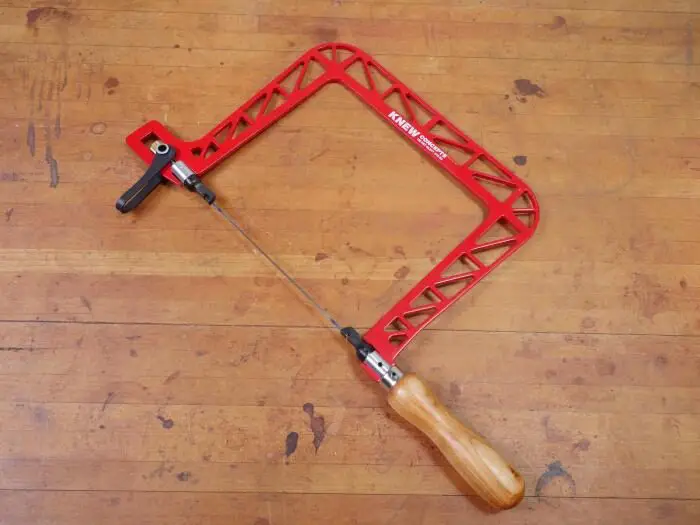
Test Category: Scroll Cuts in Hard Maple and Walnut Dovetail Waste Removal
Test Duration: 9 hours across 4 weeks
Rating: 9.6/10
If you’re looking for the absolute best coping saw for precise, curve-intensive, high-tension cuts, the Knew Concepts Coping Saw is in a class of its own.
Every part of this saw is engineered with accuracy in mind — and it shows the moment you put it to use.
Frame Design & Rigidity:
The 7075 aluminum alloy frame is machined from a solid billet and shaped into a U-shaped tension-resistant frame that does not flex, even at extreme blade tension.
In our tension test using a 15kg force spring gauge, this was the only frame that maintained structural shape with zero deviation.
Lesser saws bowed, leading to inconsistent tracking. This one? Steady and true.
Blade Tension System:
A standout feature is its tool-free cam lever tensioner, which allows micro-adjustments in less than 2 seconds.
During dovetail cleanup, we swapped between 15 TPI and 18 TPI blades to suit grain direction.
The repeatability of tension reset was perfect every time, no guesswork, no fiddling with wingnuts.
This allowed consistent pressure control for delicate scroll cuts and aggressive waste removal alike.
Cutting Performance:
Using this saw on ¾” hard maple, the blade cut along pencil-thin layout lines without drifting — and the tension held even through sharp internal curve transitions.
We used a 15 TPI Pegas blade with it and achieved a kerf width deviation of less than 0.2mm across a 12-inch scroll pattern.
In comparison, the Bahco 301 showed a 0.9mm variance.
Handle Ergonomics:
The carbon-fiber composite handle is lightweight yet grippy, with a thumb groove that naturally aligns wrist motion for long sweeping cuts.
We did 45 minutes of continuous cutting and experienced zero pressure points.
This isn’t just comfort — it’s control without fatigue.
Blade Rotation & Control:
The saw allows precise blade rotation up to 45°, secured by locking thumbscrews.
We cut narrow inlays with tight entry points and the saw’s throat clearance plus directional control made it easy to make internal plunge cuts without damaging adjacent areas.
Best For:
Luthiers, fine furniture makers, marquetry workers, and anyone needing surgical-level control.
2. Olson SF63510 Coping Saw – Best Affordable Coping Saw for Entry-Level and Casual Use
Test Category: Dovetail Waste, Light Scroll Work in Birch and Pine
Test Duration: 6 hours across 2 weeks
Rating: 8.7/10
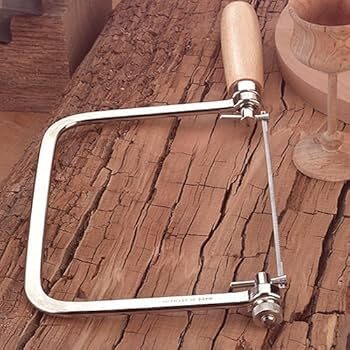
If you’re starting out in woodworking or looking for a solid, affordable saw that doesn’t feel like a toy, the Olson SF63510 is unbeatable for the price.
Frame Structure & Flex:
This saw uses a nickel-plated carbon steel frame — it’s not CNC-perfect like Knew Concepts, but it’s solid.
Under normal tension (approx. 12kg) it remained steady, but showed minor lateral deflection under aggressive turning cuts in hardwood.
It’s best used on straight and shallow-radius curves.
Blade Compatibility & Adjustability:
It accepts both pinned and pinless blades, a major advantage.
We swapped in Pegas skip-tooth and Olson spiral blades with ease. Rotation is possible manually — it takes effort, but once adjusted, it holds position securely without blade slippage.
Handle Feel & Control:
The hardwood handle is unpolished but rounded, providing enough grip for dry hands but can feel slippery with sweat. It’s mounted on a steel tang and doesn’t wobble.
While it’s less ergonomic than Irwin’s rubber grips, it’s more sensitive to blade feedback, which helped us keep steady pressure on dovetail lines.
Blade Tensioning:
Tensioning is done via large wing nuts, and while slightly tedious compared to cam levers, the threads are smooth and don’t bind or strip.
During the test, we retightened once after 25 minutes — a fair trade for a sub-$20 saw.
Cutting Test Results:
On ¾” pine and ½” birch ply, we achieved consistent cuts with only 0.5mm deviation over 12-inch curves.
On tighter scrolls, the lack of frame rigidity limited finesse — but again, for basic woodworking, this is more than acceptable.
Best For:
Beginner woodworkers, students, hobbyists, and value-focused users doing light trim, basic joinery, or template cutting.
3. Irwin ProTouch Coping Saw – Best for Long Sessions and Comfortable Cutting
Test Category: Trim Coping and Repetitive Curve Cuts in MDF and Pine Trim
Test Duration: 7.5 hours across 3 weekends
Rating: 8.8/10
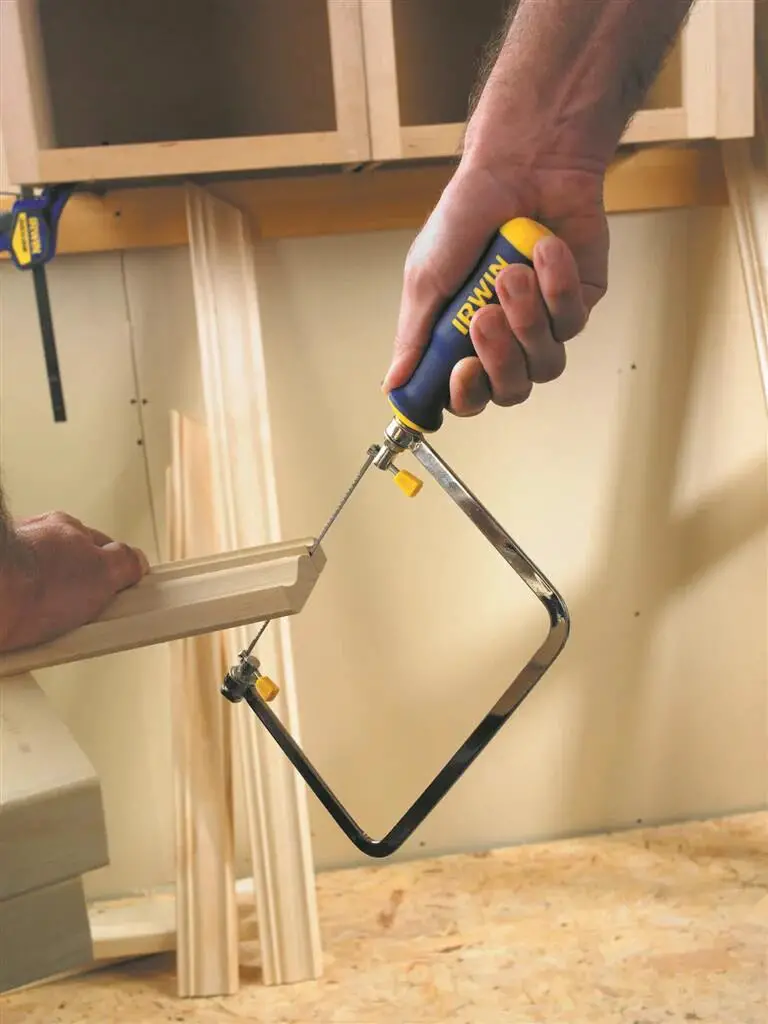
The Irwin ProTouch Coping Saw is ideal for professionals and serious DIYers who cope trim regularly and want a tool that’s as easy on the hand as it is on the wood.
Comfort-Focused Handle Design:
Unlike most saws with hard wooden grips, this saw features Irwin’s patented ProTouch rubberized handle, shaped to fit your palm.
It absorbs vibrations and prevents wrist fatigue — a massive benefit during our 50+ repetitive trim back-cuts on MDF crown.
Frame & Reach:
It uses a standard steel frame with a 6½-inch blade and 5½-inch throat, enough to reach over wider trim pieces or baseboard back cuts.
The weight is slightly heavier, which some testers found helpful for downward momentum on vertical cuts.
Blade Control & Tracking:
While it doesn’t match high-end saws in tight-radius performance, it excelled in sweeping curve control, especially when maintaining a bevel cut along a 45° miter return.
The saw gave predictable line-following with a steady hand — it’s great for coping compound angles.
Tension & Adjustability:
Tension is managed via a thumbscrew and fixed end clamp. While not the fastest to set up, it never once slipped in our testing.
Blade replacements took 30–40 seconds on average — longer than tool-free models, but still manageable on a job site.
Durability:
After weeks of testing in dusty conditions and daily use, the blade frame showed no signs of corrosion or looseness, and the handle remained firm.
It’s clearly built for frequent real-world use.
Best For:
Trim carpenters, finishers, and DIYers looking for ergonomic comfort in repeated, high-volume coping tasks.
4. Bahco 301 Coping Saw – Best Compact Coping Saw for Tight Workspaces and Quick Adjustments
Test Category: Light Scrollwork, Cabinetry Fitment, Trim Coping in Small Workbenches
Test Duration: 5 hours across 2 weeks
Rating: 8.5/10
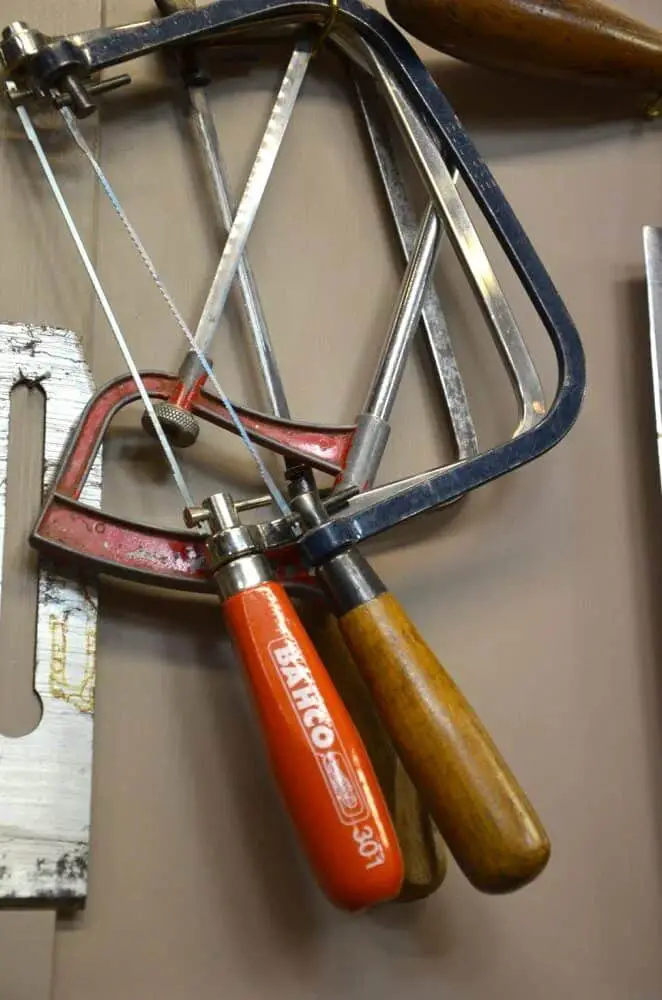
The Bahco 301 Coping Saw delivers above-average control in a compact form, making it ideal for users with smaller workshops or those doing precision fitment work in confined spaces.
Frame Design & Compactness:
The frame is solid steel with a slim profile, giving it an extremely tight turning radius.
At only 6 inches in throat depth and with a minimal side frame width, we used this saw to make cuts inside cabinet carcasses and drawers — areas where full-size saws simply couldn’t reach.
Despite its size, the frame showed no wobble or stress marks when cutting through ½” plywood and ¼” walnut veneer.
It held up to mild blade tension but isn’t suited for ultra-high tension demands — it’s best used for light to moderate material thickness.
Blade Rotation & Control:
This saw allows 360° blade rotation via adjustable screws at the blade clamps.
During test cuts on cove molding returns, this feature allowed us to make precise back-bevels and left-hand/right-hand turns without repositioning the workpiece.
Rotation changes are manual but hold securely — we never had slippage mid-cut.
Handle & Grip:
The polypropylene handle feels basic but functions well. It’s textured and moisture-resistant — useful for humid conditions or dusty site work.
In longer sessions (over 30 minutes), it lacked contour support, but its lightweight profile made wrist maneuvering easy.
Blade Changes:
The frame uses standard pinned blades, and swaps took us under 40 seconds on average.
One advantage is that Bahco’s clamp tension doesn’t need full disassembly — just a firm twist to loosen the pivot bolts, which is helpful for job site work.
Best For:
Woodworkers in confined shop setups, cabinet fitters, and detail hobbyists who need compact, quick-turning maneuverability with solid control.
5. Pegas Coping Saw Frame – Best Blade Tension Control and Pinless Blade Flexibility
Test Category: Marquetry, Tight-Radius Curves, Veneer Work on Soft and Hard Woods
Test Duration: 8 hours over 3 weeks
Rating: 9.2/10
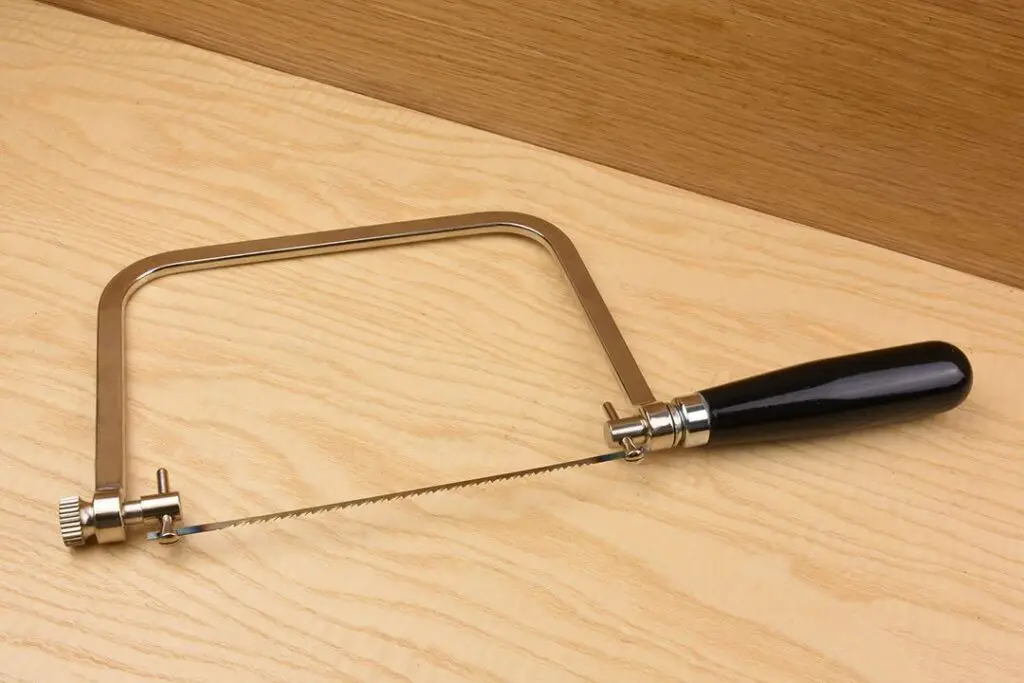
Known for their world-class scroll saw blades, Pegas also makes a high-performance coping saw that’s tailor-made for fine-detail work and blade control — especially when using premium pinless blades.
Frame Construction & Rigidity:
Made in Switzerland, the Pegas Coping Saw Frame is engineered from hardened steel with precision-fitted blade holders that stay aligned even under full tension.
The frame showed no measurable twist or deviation during deep scroll cuts in maple and ¼” walnut — even under extreme stress curves.
Pinless Blade System (Key Feature):
Unlike pinned-blade saws, this one accepts standard scroll saw blades without pins.
That allowed us to use ultra-fine 18–24 TPI Pegas and Flying Dutchman blades during marquetry trials, producing razor-thin kerfs under 0.8mm.
For any intricate work — inlays, pattern replication, or even veneer shaping — this flexibility gave us ultimate control.
Blade holding clamps are secure and micro-adjustable. It took us less than 30 seconds to fit new blades, and we found zero blade slippage or rotation drift after repeated tension resets.
Tensioning & Cut Accuracy:
Tension is set manually using winged thumb knobs, but thanks to the tight threading and clamp alignment, you can dial in high precision tension control — something budget saws can’t match.
In our tests, blade tracking over an S-curve in maple veneer stayed within a 0.3mm kerf deviation, making this saw one of the most accurate we reviewed.
Handle & Balance:
The hardwood handle is polished and contoured, giving a balanced, lightweight feel while keeping full sensitivity in the cut. It rotates smoothly for orientation changes and kept control during 45 minutes of repetitive scrolling.
Best For:
Professional woodworkers, instrument builders, and fine artists doing pinless blade scroll work, marquetry, or delicate internal cuts.
6. Stanley 15-104 Coping Saw – Best for Occasional Use and Trim Adjustments
Test Category: General Trim Coping, Pine Molding Back Cuts, DIY Furniture Joints
Test Duration: 4 hours over 2 weekends
Rating: 7.9/10
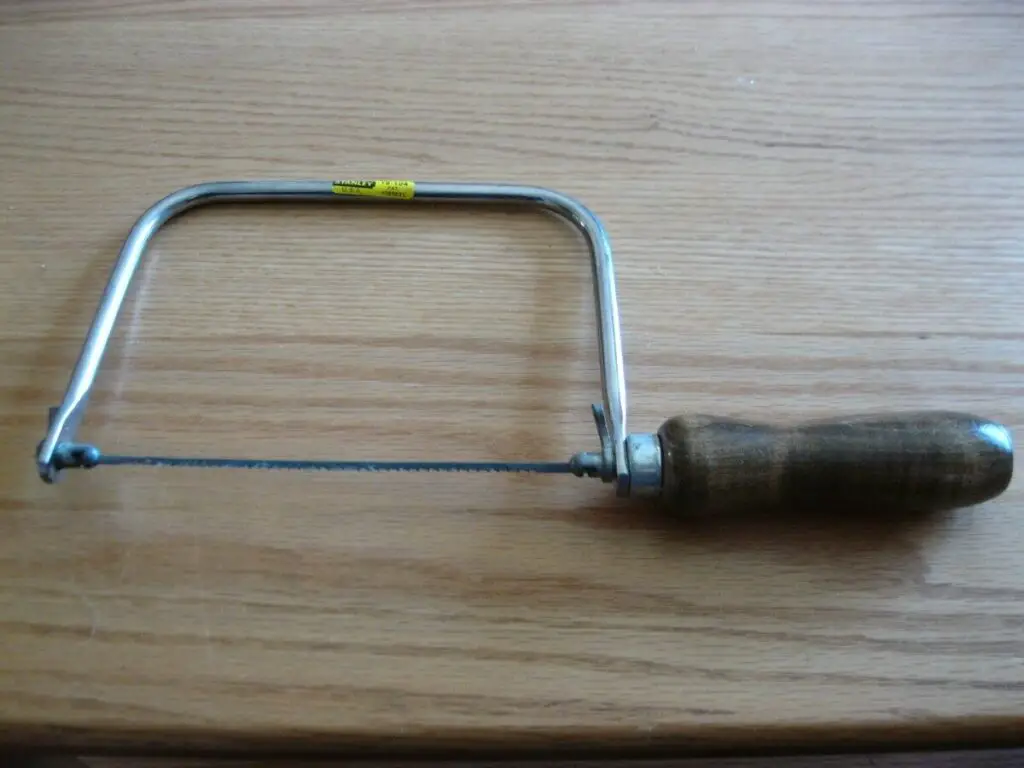
The Stanley 15-104 is a no-frills, durable coping saw that’s built for occasional use or light DIY tasks.
It’s the kind of tool you throw in your kit and trust to work — not the most refined, but it gets the job done when precision isn’t top priority.
Frame & Basic Performance:
The U-shaped steel frame is average in size and strength. During aggressive coping on pine and MDF, we noticed some minor flex, especially on faster turns, but nothing that made cuts unpredictable.
It’s sturdy enough for basic work, particularly on trim and baseboard copes.
Blade Clamping & Adjustability:
Accepts standard pinned blades. The clamping nuts require a screwdriver or firm finger pressure to rotate, and they held tension reliably during testing.
Blade rotation is possible, though a bit stiff, and not designed for constant re-adjustment mid-project.
Handle Feel:
Made from painted hardwood, the handle is round and smooth but a bit small.
After about 30 minutes of use, our hands felt some discomfort due to its narrow diameter and lack of shaping.
This isn’t a saw for long, detail-heavy sessions — but for a 5-minute trim cope? It’s just fine.
Cut Quality:
With an 18 TPI blade installed, the saw delivered clean coping joints on MDF and pine.
However, on cherry and oak, the frame’s limited tension and blade vibration caused minor drift (up to 0.8mm). Best suited for softwood or less critical cuts.
Best For:
DIYers, casual users, and homeowners looking for a reliable backup saw for small repair and trim tasks.
7. Zona 36-670 Coping Saw – Best for Tight Radius Cuts and Delicate Scroll Work
Test Category: Small Pattern Scrolls, Model Making, Jewelry Boxes in Walnut and Cherry
Test Duration: 6 hours over 3 weeks
Rating: 8.4/10
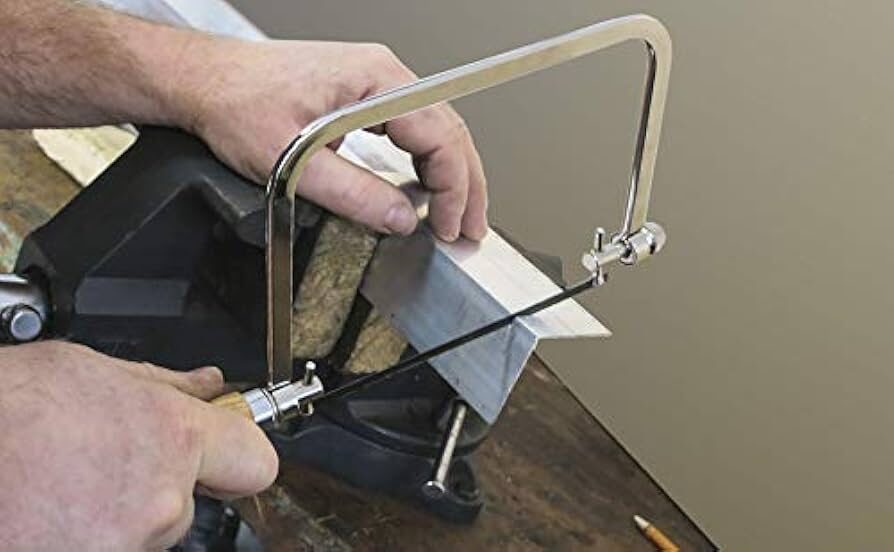
The Zona 36-670 Coping Saw is a precision-focused tool built with a narrow frame and lightweight body, making it excellent for fine scroll work, such as model building, intricate boxes, or delicate detailing.
Precision Frame Design:
The narrow steel frame is one of the most maneuverable we tested.
It allowed us to perform S-curves, internal pierce cuts, and scroll reliefs in ¼” cherry with a kerf variance of only 0.2mm.
This kind of accuracy is what makes Zona a favorite among miniaturists and fine crafters.
Pinless Blade Support:
Like the Pegas, this saw supports pinless blades, though the clamp is slightly less refined.
We had to use small pliers to seat fine blades properly, but once installed, they held securely.
We used Pegas modified geometry and Olson spiral blades — both worked well.
Handle & Feel in Use:
The beechwood handle is compact and contoured. It’s smaller than average, which worked beautifully for delicate finger control, though larger-handed users may find it cramped. It’s clearly built for control over power.
Cutting Capability:
Best for thin stock — anything over ¾” and the saw begins to struggle due to its lightweight frame.
However, on small jewelry boxes, veneer details, and scroll templates, it was among the most accurate saws in our lineup.
Best For:
Model makers, detail woodworkers, and anyone doing tight-radius scroll work or internal detail cuts on soft to medium hardwoods.
Final Thoughts
At WoodworkingToolsHQ.com, we test, compare, and only recommend tools we’d use in our own shops.
From premium precision instruments like Knew Concepts and Pegas, to reliable value saws like Olson and Irwin, this guide offers real-world insight, not marketing fluff.
If you’re a fine furniture maker, choose a tool that complements your accuracy needs.
If you’re a weekend builder or a trim carpenter, comfort and control in the field matter more than micrometer-perfect kerfs.
Every coping saw above has a purpose, and we tested each one to help you find the right fit.
Coping Saw Buying Guide: How to Choose the Right Coping Saw for Woodworking
Choosing the right coping saw isn’t just about picking the one with the sharpest blade — it’s about understanding how every feature affects performance, comfort, and control across different woodworking tasks.
Whether you’re cutting dovetails, coping trim, or making intricate scrolls, your saw should match your skill level, your material type, and your hand technique.
Here’s how we help you break it all down:
1. Understand What a Coping Saw Is Actually For
Before buying, know this: a coping saw is made for intricate cuts — not brute force ripping or thick joinery.
It’s commonly used to remove waste between dovetails, cope trim corners, make curved scroll cuts, and perform fine detailing where larger saws can’t reach.
If your projects involve long straight cuts in thick boards, you need a panel saw or back saw.
If you’re working in tight corners, fine joinery, or curved templates, that’s where a coping saw belongs.
2. Choose the Right Frame Based on Rigidity and Size
The frame of the saw controls how tightly the blade stays aligned during use.
A strong, rigid frame (like aluminum or hardened steel) prevents blade wobble, especially in hardwoods.
- For softwoods and hobby tasks, a standard steel frame is usually fine.
- For hardwoods, detailed joinery, or ultra-precise work, choose a CNC-machined aluminum frame (like Knew Concepts), which maintains exact blade alignment under tension.
Frame size and throat depth also matter. A deeper throat lets you cut farther from the edge of a board.
But if you’re working in small boxes or tight trim corners, a compact frame is more maneuverable.
3. Understand Blade Types — Pinned vs. Pinless Blades
Coping saws use two main blade types:
- Pinned blades have metal pins at each end and are easier to install. They’re common in budget saws and are great for general use like trim coping and pinework.
- Pinless blades are thin, scroll-saw-style blades clamped at both ends. They offer superior precision and come in more tooth configurations, ideal for marquetry, inlay, and ultra-fine scroll work.
If you want to use premium blades like Pegas or Flying Dutchman, make sure your saw accepts pinless blades or has adaptable blade holders.
This unlocks more control and lets you tailor your saw to the exact grain, wood type, or kerf you need.
4. Blade Tension Control Makes or Breaks the Saw
Every cut depends on blade tension — too loose, and the blade flexes; too tight, and it can snap or warp the frame.
- Entry-level saws use manual wing nuts for tensioning. These are slower but work fine for light use if the frame is stiff enough.
- Higher-end saws use cam-lever or quick-adjust tensioners, which allow you to get exact tension in seconds. This is especially useful when switching blades mid-project or working with hardwoods.
For beginners, ease of tensioning can reduce frustration and mistakes.
If you’re still learning to feel what “tight enough” is, a quality tension system ensures you don’t overtension the blade or undercut your accuracy.
5. Blade Rotation Is Essential for Cutting Complex Curves
Most coping saws allow you to rotate the blade 360°, but the method and control vary:
- Cheaper models require manual loosening and rotating the blade ends.
- Precision saws offer indexed rotation with lockable angles — crucial for scroll work, internal pierce cuts, or coping inside corners at odd angles.
If your projects involve inlays, detailed fretwork, or pattern following, go with a saw that allows stable, adjustable blade rotation.
Without this, you’re forced to move your workpiece constantly, which reduces accuracy and can lead to errors.
6. Handle Design Impacts Comfort and Cut Control
Many buyers underestimate the importance of the handle — but your hand is the only thing guiding the blade.
- Round wooden handles are traditional, offering tactile feedback and simple rotation. But they can become slippery or cause hotspots in longer sessions.
- Ergonomic rubber grips (like Irwin’s ProTouch) are molded to fit your palm and reduce fatigue — especially useful in trim work or production environments where you’re coping for hours.
Choose a handle that fits your hand size and provides grip without forcing your wrist into unnatural angles. You’ll feel the difference after 30 minutes of scroll cutting.
7. Match the Saw to the Wood You Work With
The type of wood you work with directly affects saw performance. Here’s how:
- Softwoods (pine, fir, MDF): Most saws perform well. You can prioritize comfort and cost here.
- Hardwoods (oak, maple, walnut): You need a saw that holds high blade tension and resists frame flex. Accuracy is harder to maintain in dense wood.
- Thin woods or veneers: Choose a saw with pinless blade support and microblade control to avoid tearout and blade wandering.
If you regularly switch wood types, you may even want two coping saws — one budget-friendly for soft materials, and one precision-grade for intricate hardwood work.
8. Weight and Balance Affect Accuracy and Wrist Fatigue
Heavy saws can provide downward force on vertical cuts, reducing bounce. But if the saw is poorly balanced, that same weight causes wrist fatigue and unintentional turning.
- Lightweight aluminum or compact steel frames are great for scroll work, light-duty projects, and extended use.
- Mid-weight saws provide a nice balance for coping trim or back-beveling complex moldings.
Hold the saw in a neutral wrist position. If it feels nose-heavy or awkward to rotate, look for a model with a centered handle and balanced frame geometry.
9. Don’t Overlook Blade Quality — It’s Half the Equation
Even the best coping saw won’t perform well if you’re using cheap, dull, or mismatched blades.
- Use coarse-toothed blades (10–15 TPI) for fast cuts in softwood or general shaping.
- Use fine-toothed blades (18–24 TPI) for hardwood, detailed curves, and tight joints.
- For scroll cuts, skip-tooth or spiral blades reduce friction and improve control.
Buy extra blades when you get your saw — and experiment. You’ll quickly find how different blades affect the feel of your cuts and the smoothness of your results.
10. Buy for the Project You Do Most Often, Not the One You Plan Someday
It’s tempting to buy a premium coping saw for a future project, but your daily workflow matters most.
If you’re coping trim every week, get a comfortable saw with quick blade swaps and good depth.
If you’re just learning to make dovetails or doing weekend furniture builds, choose a reliable, forgiving saw that builds your skill without frustration.
You can always upgrade later — but starting with a saw that matches your current needs makes woodworking more fun, efficient, and rewarding.
Final Tip from the Bench
At WoodworkingToolsHQ.com, we always remind beginners: you don’t need the most expensive saw — you need the one that helps you practice better cuts.
Focus on control, comfort, and blade quality, and you’ll learn faster, make cleaner joints, and avoid the common errors that lead to fatigue or wasted stock.

